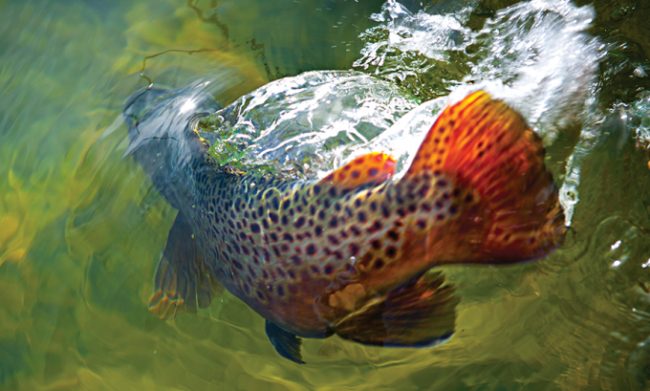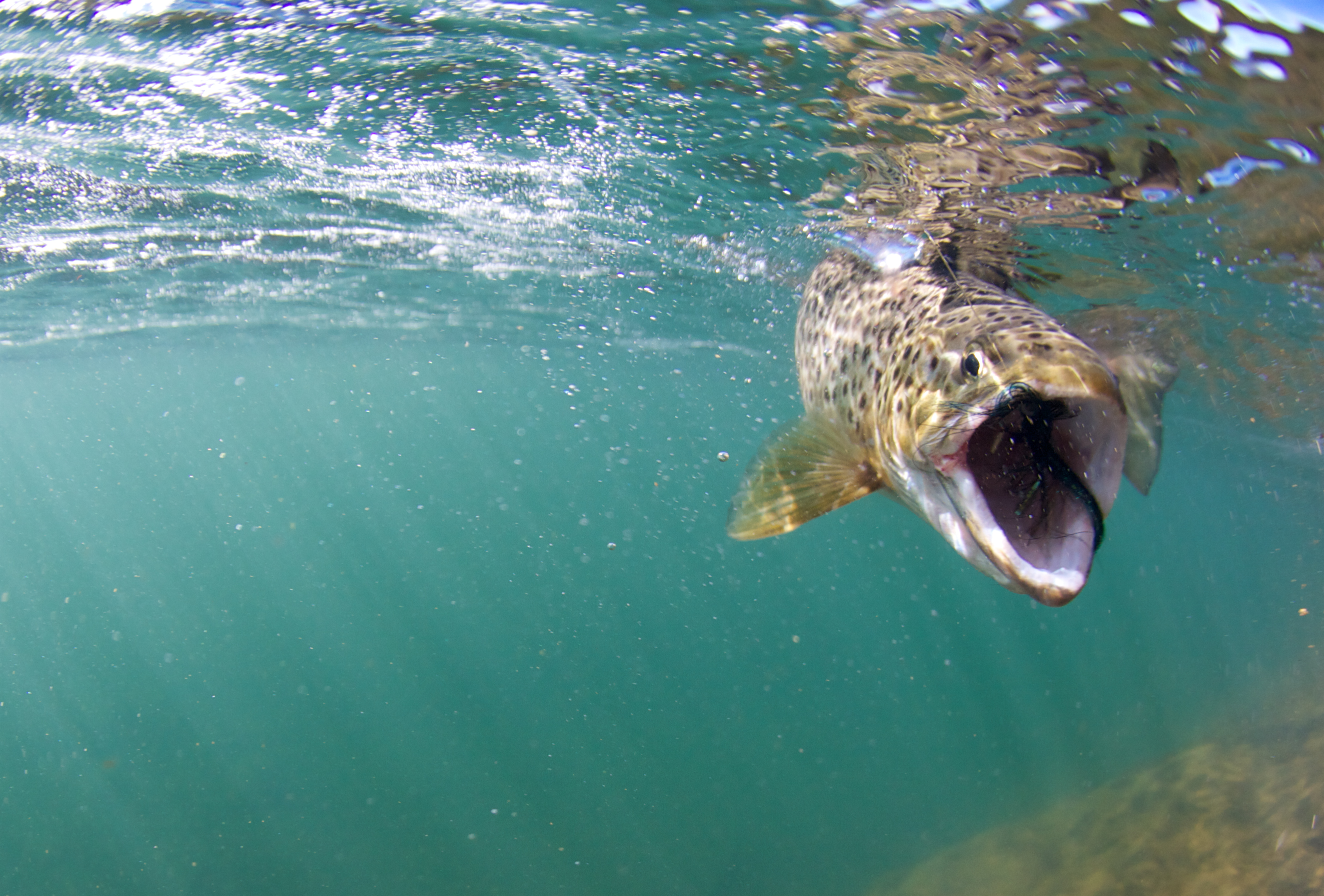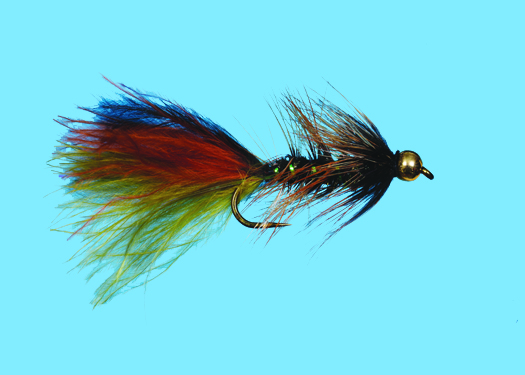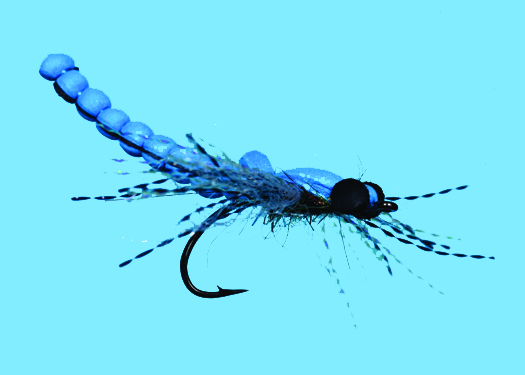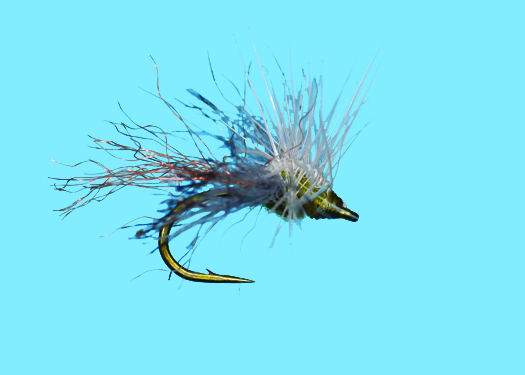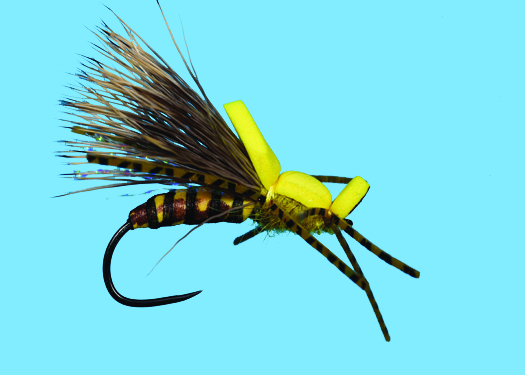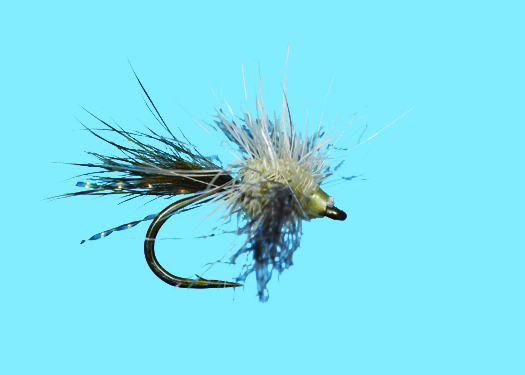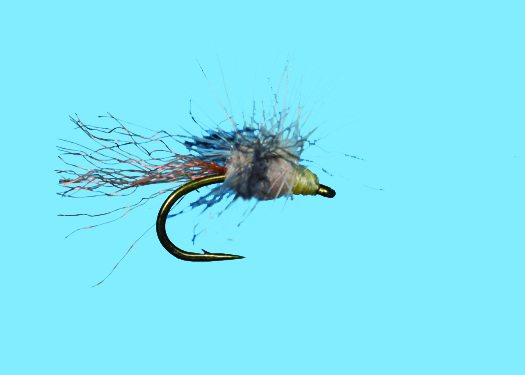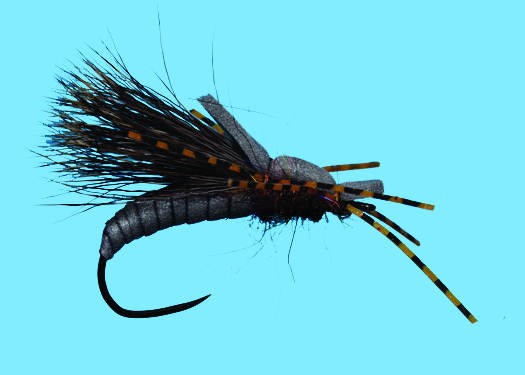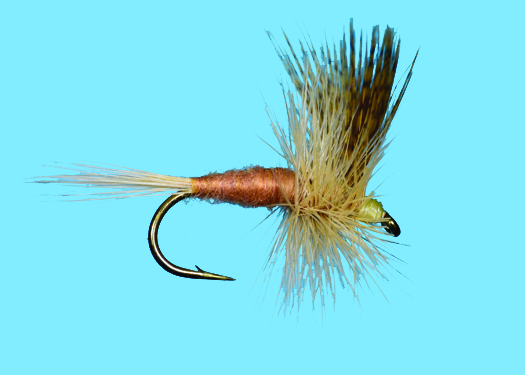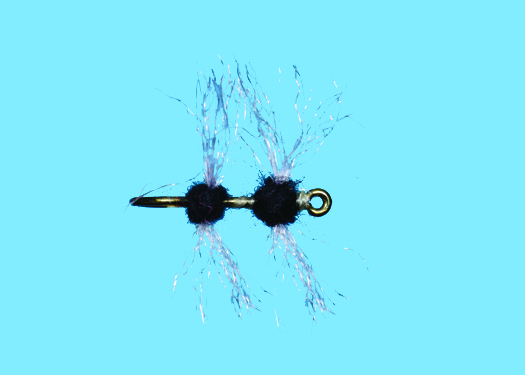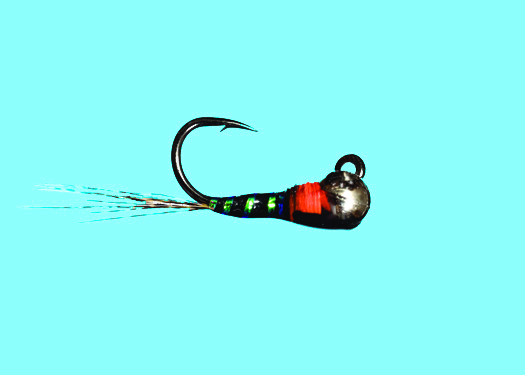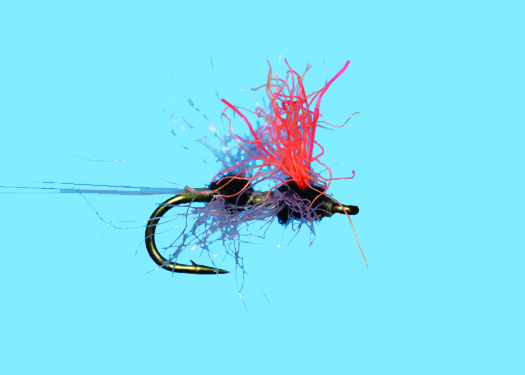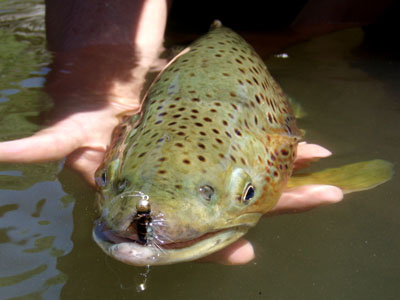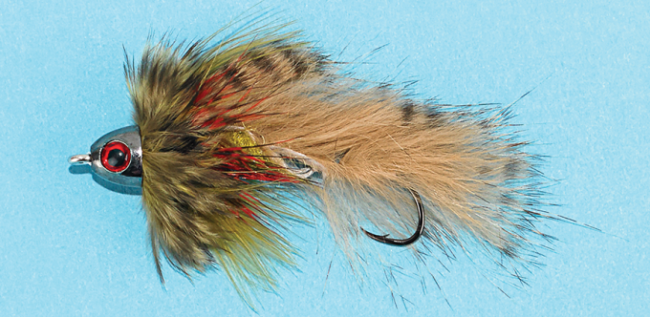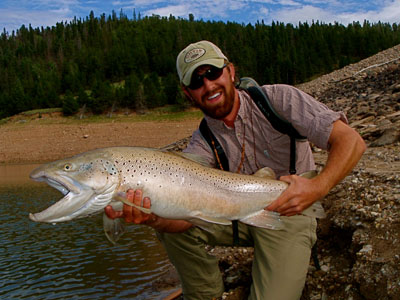Sweet Release A 24-inch Montana brown makes a splash. Photo by Brian Grossenbacher You want a real, wild trophy trout on the fly—not some pellet-fed, planted, triploid mutant (anyone can get that photo). Your fish has eaten and survived its way to the top of the river food chain, the hard way. So you’d better have your act dialed in. Friday Evening Be on the Internet scouting for “happy” water. All rivers are not created equal, and they change character every day. Very specific criteria will identify the prime hunting grounds. You need water temps that are between 45 and 60 degrees and flow levels that are strong and stable, or falling slowly, not rising. You want good water clarity, but not gin-clear. Don’t rely on hatch or catch reports from the fly shop. You don’t want promo talk—you want the real scoop that can produce a player. Get on some local message boards, see what people who have really been out there have to say, then check the latest water conditions (start at waterwatch.usgs.gov). Saturday Morning You’re up before dark. You’re already rigged when you get to the river: 5- or 6-weight rod, disc-drag reel, floating fly line, 2X tippet, and a box of meaty streamers. You’ve already tied on a tan or white Sculpzilla. If the water is a tad dirty, it’s a brown or black conehead Woolly Bugger. Your best chance of slaying the dragon will happen within your first 20 casts on the first morning, and your odds go down 5 percent with every cast you make. Because that first cast matters so much, you need to figure out exactly where to make it. So: Where would you live if you were a 7-year-old, 30-inch brown trout? Pin it down by identifying all four of these major change elements in one place: changes in depth, in structure, in current, and in water color. If you find a green-to-brown pool with rocks and/or logs at the head, a good sweeping current around the edge, and a pool that you wouldn’t dare wade into, you’re there. Invest the first 20 minutes of daylight by watching the run from the bank. When you’re gunning for trophy trout, you never cast into water you haven’t watched first. Look for a wake or a head that will help you home in on the fish. If you see nothing, your first cast should be a gentle flop, an upstream mend of the line to sink the fly, followed by an almost dead drift, right through the heart of the run. Give that fly a jig action (but not much more) as it bounces along the bottom. If the line so much as stops, gently set the hook. With every ensuing cast, add more life and action to the fly. Make cast No. 20 a full-on bank banger, with fast even strips. Add extra time between casts when you trophy fish. Don’t flog the water—you’ll never beat a mondo trout into submission. Wait five minutes between every cast. After 20 casts, with no results, move to the next best run. Midday If nothing happens in the morning, you’re faced with a conundrum. You want to keep covering water, but you don’t want to burn good runs. At this time of year, spend the brightest parts of the day working riffle water and edges with a dry-dropper rig. Match the local hatch in both regards (with a dry-fly pattern and corresponding nymph). But don’t burn yourself out: Take a nap, eat lunch, wait for a hatch to happen—and if it does, pounce. The biggest trout will eat cripple patterns in the film on the edges of runs. Follow the bubble lines. Evening It’s time to tune in to the hatch game. Really big trout give up bugs as the mainstay of their diets once they grow over 18 to 20 inches long. But some hatches still draw them out, and you want to at least give yourself a chance if that monster shows itself. Remember the prime holding spots in certain runs, and when the rings start happening, don’t pick your way through the run. Drop the fly in position A right away. If there’s a Hexagenia or drake hatch going on, send pinpoint casts into the mix, spaced a few minutes apart, for as long as you’re seeing the soup boil. When it quits, you quit. Tie on a mouse fly and wait till well after sunset. Go straight back to the target-rich run you fished at daybreak. Cast the mouse fly against the bank, and give it an erratic twitch-strip straight through the heart of the black water. Kill the headlamp to avoid spooking that big predator, and work from memory. Any fish that whacks a mouse after the protein platter of the evening hatch is an absolute glutton. Evening Repeat the process, but slow everything down even more. If nothing you saw on Saturday gave you good reason for hope, get back on the Internet that night and search for another river. Make the move if you feel so inclined. Follow this same pattern from daybreak to after sundown, and remember that sometimes the biggest trout comes on your very last cast. How to Catch Monster Trout
